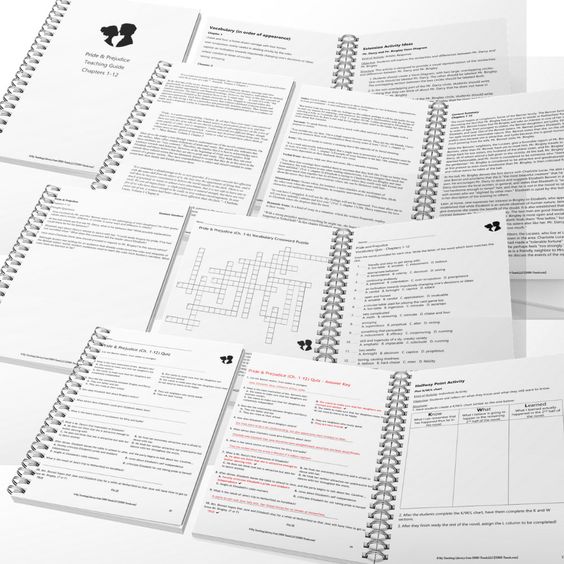1. Introduction to Pride and Prejudice: Set the stage for your students by introducing the book, its author Jane Austen, and the historical and social context in which it was written.
2. Character Map: Visualize the relationships between various characters in the novel by creating a character map, helping students understand and track their development throughout the story.
3. Social Class in Regency England: Explore the significance of social class in the novel, teaching students about the different societal expectations for each class during that period.
4. Theme Analysis: Identify major themes present in Pride and Prejudice such as love, marriage, family, reputation, and social class. Encourage students to analyze how these themes are developed through characters’ actions and interactions.
5. Understanding Irony: Focus on Jane Austen’s use of irony to address pressing social issues of her time while adding humor to her narrative.
6. Literary Devices: Help students identify common literary devices used by Austen, including allusion, symbolism, foreshadowing, and comic relief within the story.
7. Close Reading & Analysis: Have students closely read passages from the text to analyze key moments in the plot development, character relationships, and themes.
8. Adaptations & Comparisons: Compare various adaptations of Pride and Prejudice like movie versions or spin-off novels with the original text to evaluate how they highlight different aspects of the story.
9. Debates on Marriage: Organize classroom discussions or debates on marriage ideals presented in Pride and Prejudice versus modern expectations for relationships and marriage.
10. Gender Roles: Explore how traditional gender roles were portrayed through the novel’s characters and whether these depictions were subversive or reinforcing sexist norms.
11. Creating Modern-Day Characters: Have students create modern counterparts for Pride and Prejudice characters while considering changes in societal norms, gender roles, and relationships.
12. The Influence of Letters: Study the importance of letter-writing in the novel, examining how it drives the narrative and reveals different aspects of characters’ personalities.
13. Visual Storytelling: Encourage artistic students to create illustrations or comics based on their favorite scenes from Pride and Prejudice, helping to visualize key elements of the story.
14. Epistolary Literature: Discuss the significance of epistolary literature and its impact on Pride and Prejudice by considering how the exchange of letters plays a crucial role in character development and plot progression.
15. Heroines in Literature: Compare Elizabeth Bennet alongside other strong female characters in literature to examine what makes her stand out as a memorable literary heroine.
16. Screen-to-Stage Adaptations: Analyze the challenges faced in adapting Pride and Prejudice for stage productions, including maintaining key themes, character arcs, and plotlines while meeting theatrical expectations.
17. Satire and Social Commentary: Teach students about satire as a literary device used by Jane Austen to lampoon societal norms and explore deeper issues of social commentary behind her often humorous writing style.
18. Creative Writing: Have students write their own epistolary stories inspired by Pride and Prejudice or other period dramas, further immersing them in Austen’s unique storytelling approach.
19. Reflecting on Relationships: Encourage students to reflect on their personal experiences with relationships, prejudice, social norms, and expectations – drawing connections between themes found in Pride and Prejudice and their own lives.





